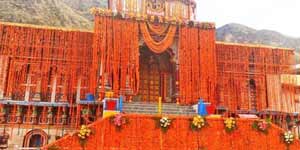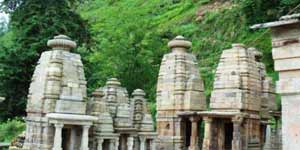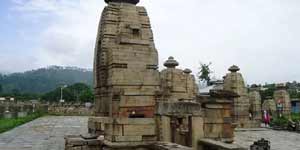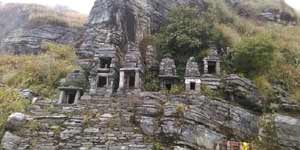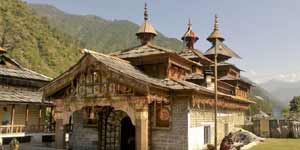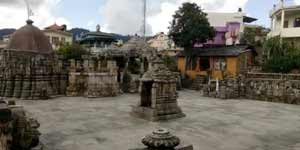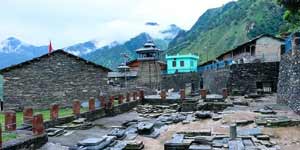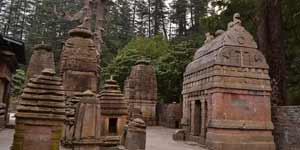
Badrinath
Badrinath is well-known in the famous Char Dhams of India. Badrinath Dham is a religious place where both Nar and Narayan meet. According to the beliefs of the scriptures, it is also called Vishalpuri. Lord Vishnu is worshiped in Badrinath Dham. That is why it is also called Vishnudham. This Dham is one of the oldest pilgrims of the Himalayas. The main entrance of the temple is decorated with beautiful paintings. The main gate is named as Singhdwar.
Badrinath Temple has very small statues of black stone with four arms. Here Lord Vishnu sits in the currency of Padmasana. According to the belief related to Badrinath Dham, this Dham was established in Satyuga. This is the reason here, that the Greatness of this Dham has been found in all major scriptures. The idol of Lord Vishnu established in this Dharam has a diamond on the head. The idol is decorated with the crown of gold. The main idol here has many other idols. The idols of Narayana, Udvavji, Kuber and Narada are prominent among them. A trunk near the temple, whose water is always hot
Badrikaashram
Badrinath being one of the most legendary Temples, it has numerous mythical tales associated with it. According to one mythological tale, Lord Vishnu had performed rigorous atonement at this place. During his intense meditation, he was unaware about the severe weather conditions. To protect him from the scorching heat of the sun, his spouse Goddess Lakshmi acquired the shape of Badri tree and spread over him. Witnessing this, Lord Vishnu was pleased by her devotion and hence he named the spot after her as Badrikashram.
Lord Narayana�s Desire to Meditate in Badrinath
Another legend states that, Lord Shiva and Goddess Parvati were once performing tapasya in Badrinath. It was then Lord Vishnu came in disguise as a small boy and disrupted them, by crying loudly. On hearing that Goddesses Parvati asked him the reason behind his mournful behavior, to which he replied that he wanted to meditate in Badrinath. Shiva and Parvati, on discovering Lord Narayan in disguise, left Badrinath and moved to Kedarnath.
Tale of Nar and Narayana
Badrinath Dham is also related to the tale of the two sons of Dharma, Nar and Narayana who wished to setup their hermitage and expand their religious base amidst the pious Himalayas. Going by the legends, during their quest to find a suitable place for their hermitage they led to a chanced discovery of the four sites of Panch Badri, namely Dhyan Badri, Yog Badri , Bridha Badri and Bhavishya Badri. Finally they came across a spot which was blessed with two fascinating cold and hot springs behind river Alaknanda. They were extremely overjoyed on finding this place and thus they named this place as Badri Vishal, this is how Badrinath came into being.
Pandava's Ascent to Swargarohini Via Badrinath
It is also said that the Pandavas of the holy epic Mahabharata climbed via 'Swargarohini, popularly known as the ascent to heaven, and Mana town, north of Badrinath while on their route to heaven.
The Origin of River Alaknanda
Last but not the least, there is another great legendary tale, which is associated to Badrinath. Legends state that the holiest and curse reliever, river Ganges had granted the request of Bhagiratha, for relieving the humanity from the curse of sufferings and sins. While ascending to earth, the intensity of river Ganges was such that it could have immersed the entire earth under its waters. To release the earth from such unbearable consequences, Lord Shiva bore her onto his tresses and ultimately, the river Ganges got divided into twelve holy rivers and river Alaknanda, which flows past the sacred Badrinath Temple, was one of them.
Uttarakhand Monuments
The state of Uttarakhand attracts big crowds from almost every part of the country and outside. Both from historical and religious points of view, the state has a prominent place in the country. The state's rich history has been gifted with several monuments dispersed throughout. Past rulers like the Pandavas, Kauravas, Guptas and the British all erected monuments during their reigns. Today, Uttarakhand is visited in great number for its high number of monuments, which only increase the state's glory.
You'll see a huge number of historical as well as religious monuments across the state. Temples form an important part of the monumental treasure of the state. These religious monuments also feature some of the best temple architecture in India. Apart from Hindu temples, the state also features many Tibetan Buddhism monuments that are a must visit for travellers.
List of Uttarakhand Monuments
If you are a keen lover of monuments, the state of Uttarakhand welcomes you. Given below is a list of all the religious and historical monuments that you can plan to visit during your holidays in the state. If you want more details on these monuments or want to plan a tour, feel free to get in touch with our travel advisors who are waiting to hear from you.
- Badrinath group of temples
- Bandeo Temple
- Gujardeo Temple
- Kacheri group of temples
- Kutumbari Temple
- Maniyan group of temples
- Mritunjaya group of temples
- Ratan Deo Shrines Surya Temple
- Dandeshwar Temple
- Chandi-ka-Temple
- Jageshwar Temple
- Kuber Temple
- Nanda Devi
- Nava-grah Shrine
- Pyramidal Shrine
- Patal Bhubaneshwar Caves
- Kalinga Monuments
- Rudranath Temple


